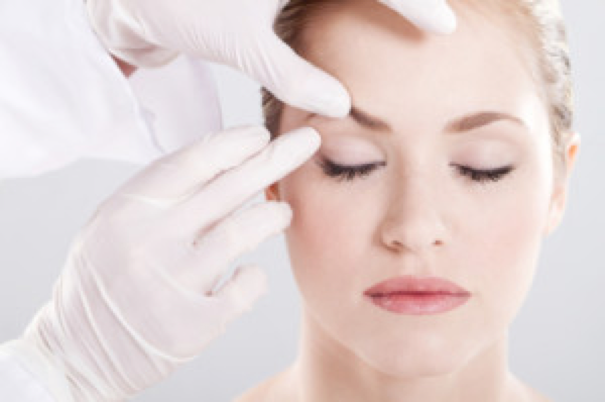Our upper and lower eyelids are both essential to our vision and play a significant part in defining our beauty. However, over time the aging process, environment, genetics, and life take their collective toll. This results in changes to the tone, texture, and elasticity of the skin and, in some cases, to the muscles of the eyelid.
What are the differences between the aging changes that happen to upper vs lower eyelids? Are there medical differences in what can happen to upper and lower eyelids?
Eyelid surgery is one of the most common cosmetic surgical procedures performed in the United States today. Eyelid surgery, or blepharoplasty, is a surgical procedure to improve the appearance of the eyelids.
Surgery on Upper and Lower Eyelids
Corrective surgery can be performed on the upper eyelids, lower eyelids or both at the same time. The skin around our eyes is delicate and is typically the first thing to visibly show signs of aging. Just like the lower eyelids, the upper eyelids can be considered a cosmetic procedure to help correct some of the first signs of aging when the appearance of the skin is thin, wrinkled, or looser in laxity. Since the skin around the eyes is delicate and is more susceptible to breaking down, this can also lead to problems with our vision. If the eyelid skin begins to droop, it can easily impact your peripheral vision. At this point, the upper eyelid procedure would be considered functional and may even be covered by your insurance!
Deciding to have surgery on the upper or lower eyelids or both, can be a big decision and can differ patient to patient depending on cost, recovery, and goals after surgery!
Cost differences:
In some cases, the upper eyelids may impair your vision or peripheral vision. In these cases, the upper eyelid procedure may be covered by your medical insurance. For reasons pertaining to the look or appearance of the upper or lower lids, the procedure would be considered cosmetic and would be billed at a self-pay rate.
Time differences:
The procedure typically takes 45 minutes to 1 hour for upper blepharoplasty and 90 minutes for lower blepharoplasty. Up to 2.5 hours for a combined procedure.
These procedures may be combined with other functional or cosmetic procedures which may extend the surgical duration.
Surgery differences:
Preparation for surgery remains the same whether you choose to have surgery on one or both eye areas. The main difference in the procedure types is where the incisions will be made.
During the upper eyelid procedure, incisions are made in the natural crease where excess skin or fat will be removed to help give off a more well-rested and youthful appearance. For the lower eyelid procedure, an oculoplastic surgeon will make an incision below the lower eyelash line to help remove or redistribute any excess fat or skin within that area. Patients who may benefit from lower eyelid surgery make be experiencing puffiness, dark bags or circles below their eyes.
Both procedures will help give off a more youthful look and will hide any incisions or scars with natural creases of the eye.
Recovery differences:
Whether you decide to have one or both procedures done at the same time, the time it takes to recover will remain the same. During your recovery, antibiotic ointment and cool compresses may be applied to help limit potential swelling and bruising. You will be provided with specific instructions to care for your eyelids, medications to apply or take orally, and potential limitations on physical activity. Initial healing may include swelling, bruising, foreign body sensation, dry eyes, itchiness and little to no pain. Symptoms are often managed with oral/topical medications and cool compresses. Bruising tends to resolve in 7 to 10 days and swelling continues to improve. Most patients are able to return to full activity in 2 to 3 weeks; however, it may take several months to achieve a final result.

